How to Trout Fish 101: Beginners Guide
Posted by Andrew Law (2/14/2023)
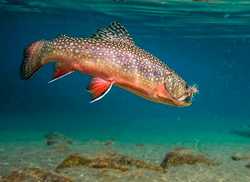
This article will walk you through everything on how to fish for trout. We will breakdown details on trout fishing rivers, lakes, what tackle to use, including both fly and spinning techniques, as well as the rigs you should use along side your fishing gear.
Background info on Trout:
While Trout are behind Bass as the 2nd most popular sport fish in California for 2021 in North America, These cold water native fish are found primarily on the west coast and can be found in rivers/streams and some lakes.
Rainbow Trout, Brook Trout, & Brown Trout are the 3 most commonly fished for species of trout and are excellent tasting.
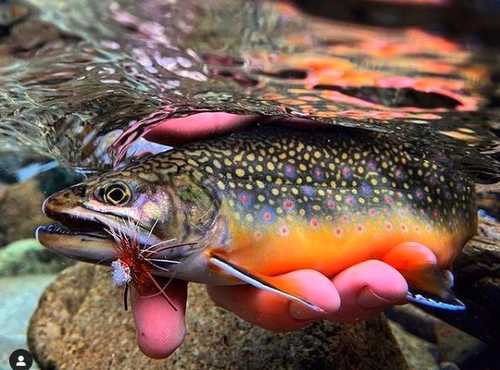
Where to start: The 1st thing you should do, is figure out if you will be fishing a pond/lake OR a stream/river. The fishing techniques for each are going to be different from one another. It is important to note that fishing for trout on a river is going to be very different from fishing for trout in a lake or pond.
Trout Fishing in ponds/lakes Trout fishing in lakes and ponds is going to be much more closely resemble that of bass fishing than river trout fishing. They are cruising and roaming the waters constantly on the search for food. Structure, water inflows, vegetation & the availability of deeper waters are where you will find these fish. Each of these fulfill a primal need. Structure provides protection from predators, water inflows provide food, vegetation provides hunting grounds, and the deeper waters provide cooler water.
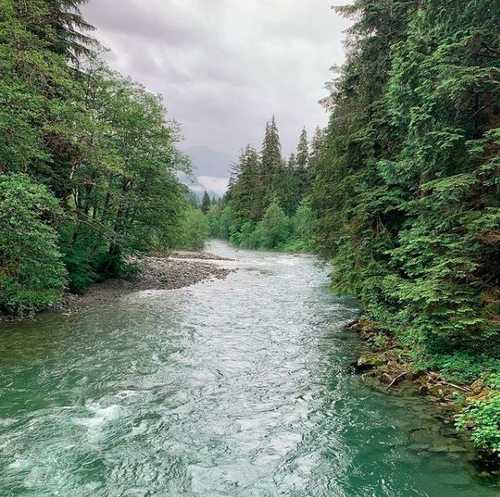 Trout Fishing in rivers/streams
In these bodies of water, trout have different priorities and methods of feeding than in lakes. When there is current, trout tend to stick to one spot and wait for the water current to bring their food downstream directly to them. They also tend to do this in places along the river that provide structure/protection from the current to rest as well. A staple in a young adult trout's life is bugs, water insects, & larvae. Looks for areas where there are eddys in the current. These can be visible above the surface and can also exist below the surface as well. There are great spots for fish to be able to do both rest and also feed at the same time.
Trout Fishing in rivers/streams
In these bodies of water, trout have different priorities and methods of feeding than in lakes. When there is current, trout tend to stick to one spot and wait for the water current to bring their food downstream directly to them. They also tend to do this in places along the river that provide structure/protection from the current to rest as well. A staple in a young adult trout's life is bugs, water insects, & larvae. Looks for areas where there are eddys in the current. These can be visible above the surface and can also exist below the surface as well. There are great spots for fish to be able to do both rest and also feed at the same time.
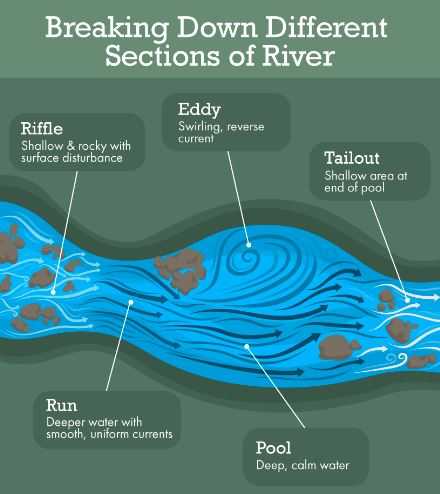
Finding cold moving water in lower elevations is why fishing in the colder months is better since they will be more active. Since trout are also a great food source for many wildlife animals as well, the more secluded and remote of a river you can fish, the more likely you are to find an abundance of trout.
Trout Fishing Gear and tackle: To keep it simple, a rod and reel, a small assortment of bait hooks, bobbers, bait and lures is the general list of things you will need. Here are some more detailed suggestions on fishing gear:
Spinning Gear Recommendations:
- Lightweight 6 ft spinning rod with 4-6 lb fluorocarbon
- a 1/16 & 1/8 oz spinners
- pack of size 8 bait hooks
- a pack of color indicator bobbers
- powerbait
- (#5)/2.54g splot shot clamp weights
- live worms (not not nightcrawlers preferably since they can be a little too big)
Fly Fishing recommendations:
- Fly Rod - graphite 5-weight 9 ft long
- weight forward, 5-weight fly line
- tapered mono leaders about 4x7.5 ft long
- spools of 4x and 5x tippet
- fishing tools
- assortment of regionally correct flies
What Trout Fishing Technique should I start out with on a lake or pond?
Hanging bait below a bobber on a bobber rig is probably one of the easiest ways to start catching trout. Using a bait hook and a piece of Powerbait or worm on the hook, dangle that 1-3 feet below the surface of a bobber. Use those split shot weights as needed to make sure your hook and bait since below the water. This is good technique if they are need the top of the water.
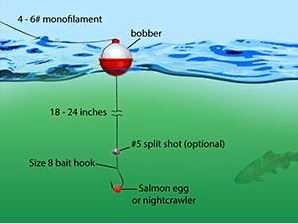
If they are deeper, you can do a sinking bait rig without a bobber and use a sinker & floating bait like Powerbait to help suspend your bait 1-3 feet off the bottom. The Lead weight will allow you to cast out our bait but and maintain contact with the bottom. The weight will sink but the bait will float.
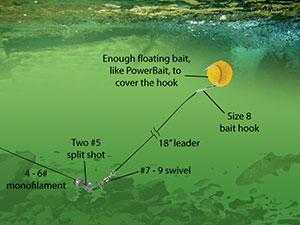
What Trout Fishing Technique should I start out with on a river? When fishing for trout in moving water it is important to keep in mind that it is the current that imparts action to your bait, not your retrieve. This is an adjustment a bass fisherman will need to remember.
If you opt to start with drifting a worm or Powerbait, use split shots to keep your bait lower in the water column. The use of a bobber is also great to help track the bait as it drifts downriver.
If you are using a spinner or spoon cast upriver and let the current carry your bait downriver on a semi slack line keeping your line out of the water when possible to more closely imitate a natural drift. Maintaining as natural a presentation as possible is much more important when trout fishing than bass fishing.
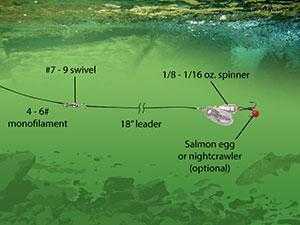
Powerbait? What is this?
Powerbait is an artificial dough ball with heavy sent that is meant to imitate pellet food. This bait is fairly commonly found in all fishing stores and online but will most likely only work on stocked trout who are already accustomed to eating this type of food. Stocked trout are grown on pellet food which is what Powerbait aims to mimic. So make sure you know if the trout you will be targeting are stocked trout or native wild trout.
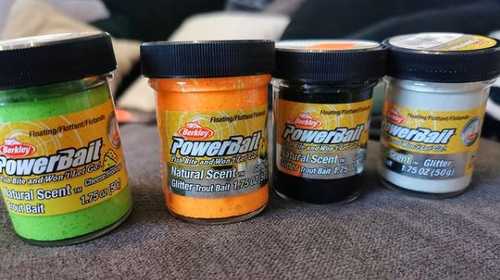
Targeting BIG trout:
If you are going to try and target exclusively BIG trout like steelhead, lake trout, or adult rainbow/brown/brook trout, be aware that they primarily feed on small fish, shrimp, worms, and large bugs. The flies and larvae they grew up eating to get to that size are just no longer big enough and worth the energy to catch. Really big trout often feed every couple of days with 1 large meal. Streamers make a good choice to weed out the smaller fish. Target The lead fish as the big ones will be in front of the pod.
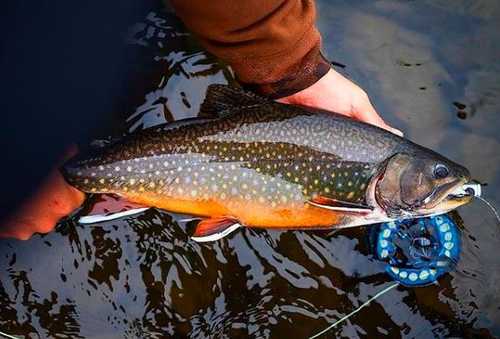
Tips for handling and releasing Trout:
If you plan on releasing the Trout, keep in mind they are not as hearty as bass and should be handled with more care if you plan on releasing it back to the wild. They cannot be out of water as long as bass can. Wet your hands before handling, revive the fish and let it swim away when its ready.
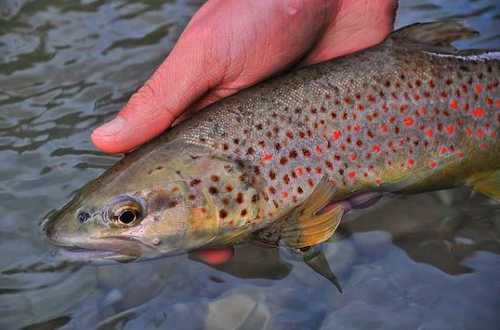
Liked this article? Share it:




